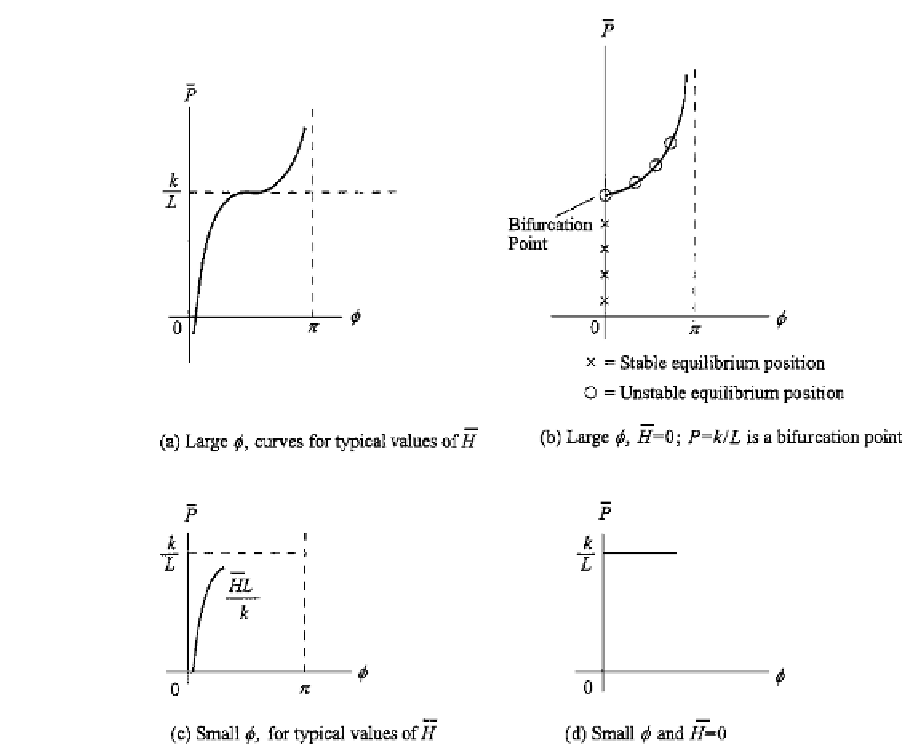Information Technology Reference
In-Depth Information
FI
GURE 11.3
P
vs.
φ
curves for the bar of Fig. 11.2.
Similar results
are
found if
o
nly small values of
φ
are to be considered. Then cos
φ
≈
1,
sin
φ
≈
φ
,
so that
P
=
(
k
φ
−
HL
)/
L
φ
. This can be written as
(
k
−
PL
)φ
=
HL
(4)
which appear
s
to be in a “stiffness-like” form. In (4),
k
corresponds to the conventional
stiffness, and
PL
i
s t
he so-called differential (or geometric or stress) stiffness, t
ha
t occurs in
stability theory. If
P
in (4) approaches
k
/
L
, then small values at applied load
H
will make
φ
theory indicates
the same
tr
ends as the more accurate nonlinear theory of Figs. 11.3a and b. The bifurcation
point of
P
approach infinity. The plots of Figs. 11.3c and d show that the small
φ
L
is evident in Fig. 11.3d.
This example c
on
tains the characteristics of more difficult stability problems. The case of
Fig.
11.
3a, where
P
is a nonlinear function of
=
k
/
and a unique state of equilibrium exists for
each
P,
would be analyzed from the standpoint of stresses if this were an elastic body. This
is sometimes said to be a
third order theory
. It is characterized
by
the nonlinear function of
φ
φ
, and that equilibrium is taken at the deformed state. When
H
=
0
,
as in Fig. 11.3b, the
bifurcation phenomenon can be identified.
For small
, another stress analysis could be utilized in the case exhibited in Fig. 11.3c. If
the influence of the nonlinearities are only approximately taken into account, this is often
φ










Search WWH ::

Custom Search